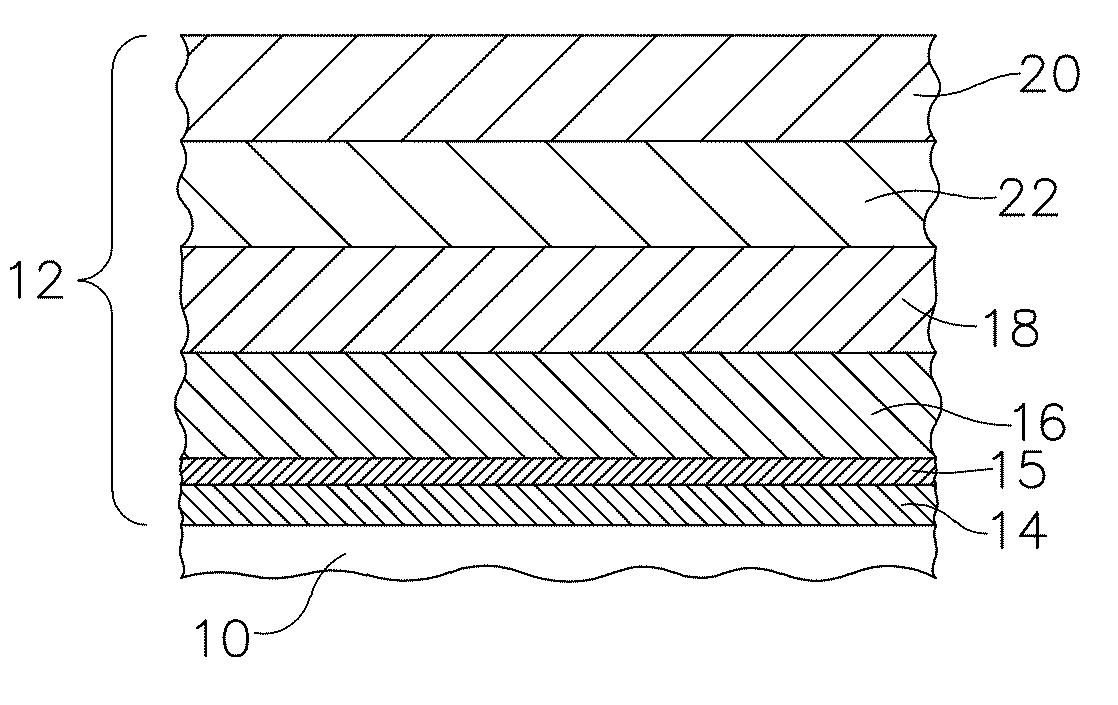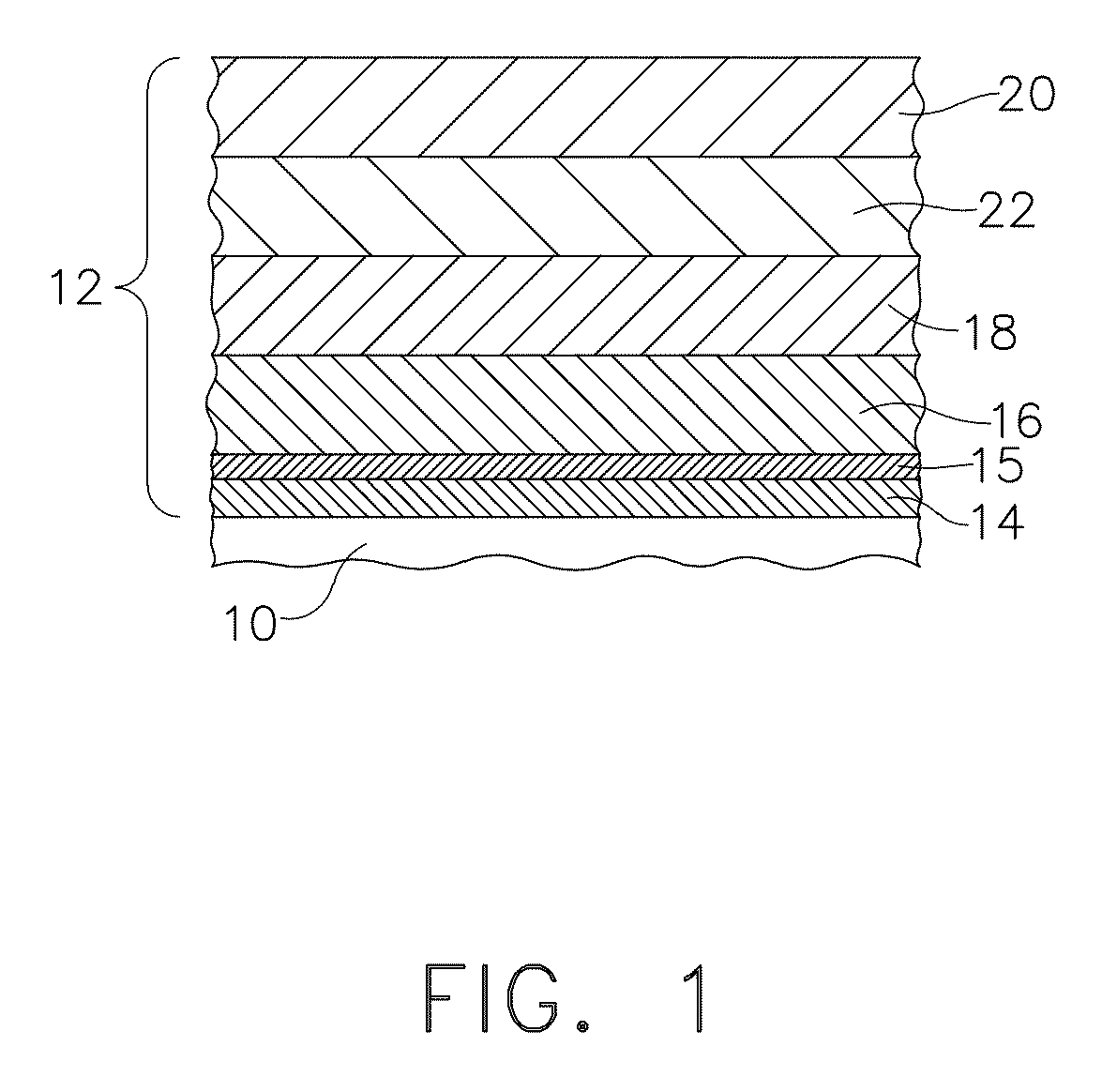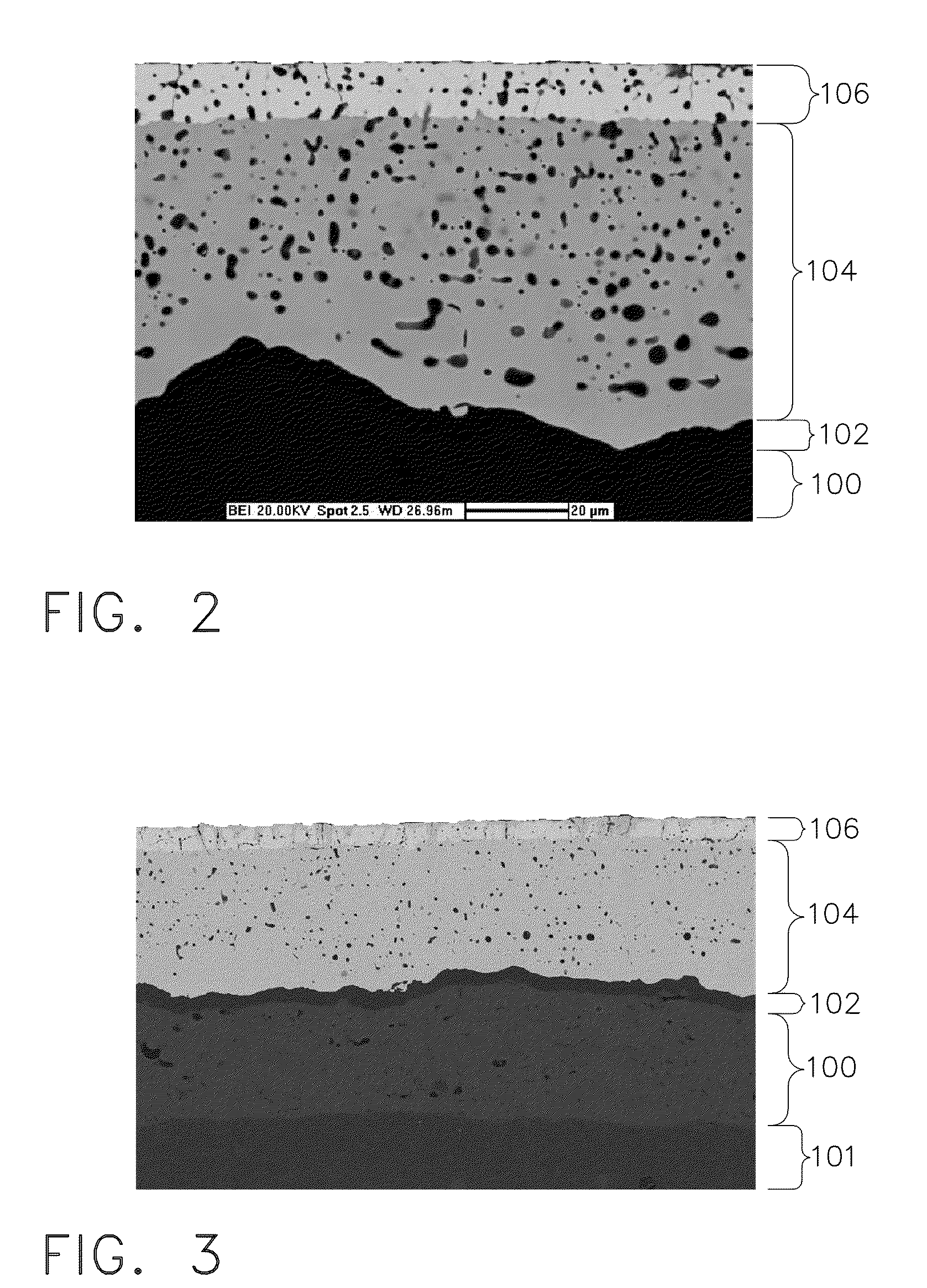Methods of improving surface roughness of an environmental barrier coating and components comprising environmental barrier coatings having improved surface roughness
a technology of environmental barrier coating and surface roughness, which is applied in the direction of mechanical equipment, machines/engines, transportation and packaging, etc., can solve the problems of unsatisfactory problems and ebc having a surface roughness greater than 200, and achieve the effect of improving the surface roughness of an environmental barrier coating
- Summary
- Abstract
- Description
- Claims
- Application Information
AI Technical Summary
Benefits of technology
Problems solved by technology
Method used
Image
Examples
example 1
[0079]A silicon bond coat was applied to a SiC—SiC CMC using a conventional air plasma spray process. Next, a primary transition material slurry was made by first mixing ytterbium disilicate (primary transition material), iron oxide nanoparticles (sintering aid), ethanol (solvent), and polyethylenimine (dispersant) in a plastic container, along with enough 0.25 inch (6.35 mm) diameter, spherical zirconia media to line the bottom of container. This mixture was placed on a roller mill for 15 hours. After taking the container off of the roller mill, the zirconia media was removed and the slurry was filtered through a 325 mesh screen to remove any large particle agglomerates.
[0080]The resulting primary transition material slurry (Slurry A) consisted of 56.11% ytterbium disilicate, 0.54% iron oxide, 0.57% polyethylenimine, and the balance ethanol (all percents by weight). The silicon-coated ceramic component was dipped into Slurry A, dried in ambient conditions, re-dipped into Slurry A, ...
example 2
[0084]A CMC (101) coated with the EBC of Example 1 was exposed to 2400° F. (1316° C.) steam for 1000 hours. FIG. 3 shows a SEM micrograph of this coating after high temperature steam exposure with silicon bond coat (100), a silica layer (102) that has grown to approximately 7.0 micrometer thickness, an iron-doped ytterbium disilicate transition layer (104), and a dense ytterbium monosilicate outer layer (106) with cracks. Some ytterbium disilicate has formed around the cracks in the monosilicate layer as an artifact of high gaseous silicon content in the static atmosphere of the steam test.
example 3
[0085]To demonstrate proof of principle, a primary transition layer was deposited on a silicon metal wafer using a slurry deposition process. A primary transition material slurry was made by first mixing ytterbium disilicate powder (primary transition material), gallium oxide powder (sintering aid), ethanol (solvent), and polyethylenimine (dispersant) in a plastic container, along with enough 0.25 inch (6.35 mm) diameter, spherical zirconia media to line the bottom of container. This mixture was placed on a roller mill for 15 hours. After taking the container off of the roller mill, the zirconia media was removed and the slurry was filtered through a 325 mesh screen to remove any large particle agglomerates.
[0086]The resulting primary transition material slurry (Slurry C) consisted of 56.35% ytterbium disilicate, 0.64% gallium oxide, 0.57% polyethylenimine, and the balance ethanol (all percents by weight). The silicon-coated ceramic component was dipped into Slurry C, dried in ambie...
PUM
| Property | Measurement | Unit |
|---|---|---|
| Temperature | aaaaa | aaaaa |
| Temperature | aaaaa | aaaaa |
| Temperature | aaaaa | aaaaa |
Abstract
Description
Claims
Application Information
 Login to View More
Login to View More - R&D
- Intellectual Property
- Life Sciences
- Materials
- Tech Scout
- Unparalleled Data Quality
- Higher Quality Content
- 60% Fewer Hallucinations
Browse by: Latest US Patents, China's latest patents, Technical Efficacy Thesaurus, Application Domain, Technology Topic, Popular Technical Reports.
© 2025 PatSnap. All rights reserved.Legal|Privacy policy|Modern Slavery Act Transparency Statement|Sitemap|About US| Contact US: help@patsnap.com



